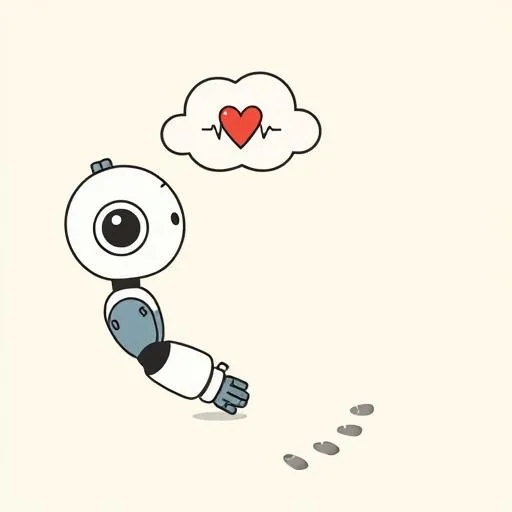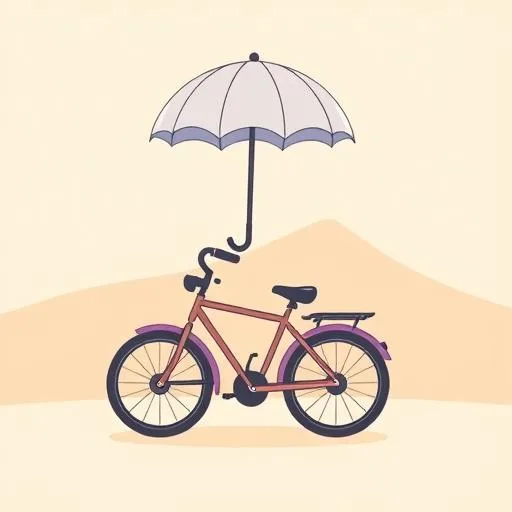
The other day, my daughter’s toy robot froze mid-dance. Instead of frustration, she patted its head and whispered, ‘Try again?’ It got me thinking—what if technology could learn that same gentle resilience? Turns out, it’s already happening. Humanoid Global just invested in RideScan, a clever little company building AI that acts like a robot’s heartbeat monitor—spotting wobbles before they become falls. No fancy jargon, just quiet watchfulness. Funny how our kids’ instincts often lead the way, isn’t it?
How Do Unseen Helpers Keep Robots Steady?

Picture this: you’re guiding a toddler down a slippery slope. You’re not just holding their hand; you’re reading every tiny shift in their balance, ready to catch them before they stumble. That’s exactly what RideScan does for robots. They’ve built AI that’s like a watchful friend—always listening for the faintest ‘uh-oh’ in a robot’s movements. Whether it’s a delivery drone or a factory arm, their tech spots early hiccups (a wobbly joint, a tired battery) before things go sideways. Shahab Samimi, CEO of Humanoid Global, nailed it: ‘It’s not just safety; it’s about trust.’ Simple as that. And here’s the kicker—it’s inspired by real-world care. Like when we notice our kids’ energy dipping mid-playdate and send them for a quiet snack break. No alarms, just attentiveness. That’s the quiet magic here: tech that’s learning to nurture, not just function. Makes you wonder—what if our gadgets cared as deeply as we do?
Why Kids Don’t Fear Falling—They Fear Not Being Caught

Remember how your little one learned to ride a bike? They didn’t panic when they wobbled; they trusted you’d be there. Now imagine that trust scaling up—to robots helping at hospitals or schools. RideScan’s mission is pure ‘safety net’ thinking: their AI monitors performance so robots earn that same quiet confidence. But here’s what strikes me as a parent—this isn’t just about machines. It’s about modeling resilience for our kids. When they see tech designed to ‘try again’ gently (like their toy robot dancing after a reset), it whispers: ‘Mistakes aren’t endings.’ One dad I chatted with at the park put it perfectly: ‘If robots can have check-ups, why shouldn’t we normalize ‘ouch’ moments for our kids?’ Think about it—when we frame glitches as growth chances (not failures), we’re teaching them to bounce back, not burn out. That’s the real-life test run: raising humans who expect kindness, even from metal and circuits.
How to Nurture Curiosity Without Screen Obsession

Let’s get real—we’ve all worried about tech overwhelming our kids. But RideScan’s story flips the script: AI as a tool for awareness, not distraction. Their system quietly analyzes how robots move and learn—no flashy apps needed. Same goes for us! Instead of fearing robots, try this: build a ‘resilience robot’ from cardboard boxes this weekend. Let your child decorate it, then ‘test’ how it handles ‘rough terrain’ (a rug hill!). When it topples, laugh and ask: ‘How can we help it stand taller next time?’ It’s like RideScan’s anomaly detection—spotting hidden lessons in everyday stumbles. And gently, without overdoing it, that cardboard friend becomes a metaphor: tech works best when it supports real-world play, not replaces it. I’ve found my girl stays curious when tech feels like a sidekick—not the main character. Why not try swapping one screen hour for ‘robot repair time’? You’d be amazed what they’ll teach you.
What If Conversations Build Gentle Power?

Here’s my favorite takeaway: RideScan isn’t about perfection. It’s about asking ‘what if something’s off?’ before chaos hits. Dr. Nandakumar, their CEO, calls it ‘building trust by design.’ Sound familiar? That’s the heartbeat of parenting too. Next time your child grumbles about a scraped knee, try: ‘What if this helps you run stronger tomorrow?’ It flips frustration into wonder. Or when dinner’s messy, smile and say: ‘What if we’re practicing for master chefs?’ These tiny questions plant seeds for resilience—the same way RideScan’s tech seeds safety into robots. And honestly? It’s liberating. We don’t need grand solutions; just curiosity woven into ordinary moments. Like strolling home from school, point to a delivery bot and ask: ‘How do you think it knows when to stop?’ Suddenly, tech feels human. That’s the legacy we’re building: kids who see the world as fixable, not fragile—one ‘what if’ at a time.
Source: Humanoid Global Announces Strategic Investment in RideScan, a Pioneer Advancing AI for Robotics Safety and Performance, Financial Post, 2025/09/08
